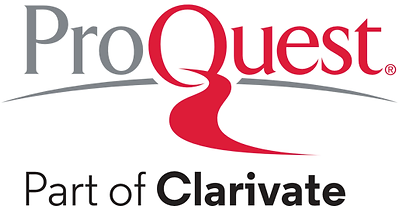Cubic Nonlinear Theory of Superheterodyne Parametric H-ubitron FEL with Section for Amplifying Longitudinal Space Charge Waves
| Authors | A.V. Lysenko , S.S. Ilin |
| Affiliations |
Sumy State University, 40007 Sumy, Ukraine |
| Е-mail | o.lysenko@mss.sumdu.edu.ua |
| Issue | Volume 17, Year 2025, Number 2 |
| Dates | Received 22 January 2025; revised manuscript received 21 April 2025; published online 28 April 2025 |
| Citation | A.V. Lysenko, S.S. Ilin, J. Nano- Electron. Phys. 17 No 2, 02004 (2025) |
| DOI | https://doi.org/10.21272/jnep.17(2).02004 |
| PACS Number(s) | 41.60.Cr, 52.59.Ye |
| Keywords | Superheterodyne Free-Electron Lasers, Space Charge Waves, Three-wave parametric resonance, Electro-static Undulator. |
| Annotation |
In this paper, an analysis of the wave dynamics of a parametric superheterodyne H-ubitron free-electron laser with a longitudinal wave amplification section is carried out within the cubic nonlinear approximation. A key feature of the studied free-electron laser is the implementation of two interconnected three-wave parametric resonances. The first parametric resonance occurs between the electromagnetic signal and the magnetic field of the H-ubitron pump. The second parametric resonance occurs between the longitudinal field of the electrostatic undulator and the fast and slow space-charge waves. The second parametric resonance pro-vides additional amplification of the slow space-charge wave. The studied model considers the effect of electrostatic pumping field generation, an analysis of the influence of a quasi-electrostatic support field is carried out, and the lengths and saturation levels of such devices are determined. It is demonstrated that, due to the additional amplification of the slow space charge wave in the longitudinal wave amplification section, as well as taking into account the effect of electrostatic pumping field generation, the saturation length of the electromagnetic signal wave is reduced by 18%. To increase the output electromagnetic signal's saturation level, we propose using a quasi-electrostatic support field, in which the electrostatic field strength in-creases linearly starting from a specific coordinate. It is demonstrated that an optimal quasi-electrostatic support field allows us to increase the output saturation level of the electromagnetic signal by more than 130%. Thus, the use of a parametric superheterodyne H-ubitron free-electron laser with a longitudinal space charge wave amplification section and a quasi-electrostatic support field has several advantages compared to a traditional H-ubitron free-electron laser, namely, a reduction in the longitudinal dimensions of the en-tire device and an increase in the power of the output electromagnetic signal. |
|
List of References |
Other articles from this number
1) Innovations and Applications in Nanosensor Technologies: A Brief Review [02001-1-02001-10]2) Prediction of Physical Behavior of Bi-Modified Se-Ge Chalcogenide System [02002-1-02002-4]
3) Design and Implementation of a Tree Fractal Biosensor Antenna System for Wireless Remote Patient Monitoring [02003-1-02003-6]
4) Influence of Interactions between Adsorbate and Substrate on the Statistical Properties of Surface Structures at Condensation [02005-1-02005-6]
5) The Effect of Geometry on Thermoplasmonic Phenomena in Metallic Nanoparticles [02006-1-02006-11]
6) An Improved Low Power Sense Amplifier Using Level Restoration Technique and Performance Comparison with Existing Sense Amplifier Topologies at 32 nm Technology [02007-1-02007-8]
7) Simulation and Analysis of Heat Dissipation in Compact Routers: Efficiency of Radiators and Case Perforations [02008-1-02008-8]
8) Translational Twins Extraordinary Classification of Divalent Nitrates [02009-1-02009-4]
9) Features of Oxidation and Annealing of Iron Nanoparticles, Obtained by the EB-PVD Method on a Rotating Substrate [02010-1-02010-6]
10) Characterization and Optimization of Si0.75Ge0.25-FinFETs Based on Operating Temperature and Gate Length [02011-1-02011-7]
11) Pulse Duration Effect of Laser Ablation on the Morphology Properties of Gold Nanoparticles Deposited on Porous Silicon [02012-1-02012-6]
12) Influence of Laser Thermal Cycling on the Structure Evolution and Tribological Properties of Plasma Coatings [02013-1-02013-5]
13) Effect of Uniaxial Compression on Excitation Conditions and Parameters of Low-Frequency Auto-Oscillations of Current in Compensated Silicon [02014-1-02014-6]
14) Reflection of Bilateral Porous Silicon with Macropores or Nanowires [02015-1-02015-7]
15) Design and Simulation of Microstrip Patch Antenna for Inter-Aircraft Communication in UHF, L-band and S-band [02016-1-02016-7]
16) Building Material Complex Permittivity at X-Band Frequencies: An Evaluation [02017-1-02017-5]
17) A Novel Low Pass Filter (LPF) Configuration Utilizing Square Complementary Split Ring Resonators [02018-1-02018-5]
18) Wideband DGS Slot Loaded Patch Antenna for High-Speed mm-wave 5G Applications [02019-1-02019-5]
19) Study of the Elemental Composition of Thin Films of CoNi and FeNi Alloys by X-ray Spectral Microanalysis [02020-1-02020-8]
20) Vanadium Dioxide-assisted Dual Band Polarization-insensitive Metamaterial Absorber for Terahertz Applications [02021-1-02021-5]
21) 6.6 GHz Single Element 2 x 4 Massive MIMO Antenna in 6G Devices [02022-1-02022-5]
22) A Triple Band Square Shape Multi-slot Defective Ground Structure Patch Antenna for C-, X-, and Ku-band Applications [02023-1-02023-5]
23) Design and Development of Four Element Multiband MIMO Microstrip Antenna for LTE/5G Applications [02024-1-02024-6]
24) Ultraviolet Photodetector Based on Nanostructured Copper Iodide Films Deposited by Automatic SILAR Method [02025-1-02025-7]
25) Multiband Operational Antenna in Ultra Wide Band (UWB) Frequency Range with Substrate Structure Modification Approach [02026-1-02026-6]
26) Quality Control Model for Electrospun Nanofibers through Image Analysis [02027-1-02027-6]
27) Resistance to High-Temperature Gas Corrosion of Сhromaluminizing Coatings with a (Ti, Zr)N Layer on Nickel [02028-1-02028-7]
28) Energy-Conscious FPGA Design through Dynamic Voltage and Frequency Scaling for Wearable Devices [02029-1-02029-6]
29) Spintronic Prospects of Half-Heusler Alloy MnAuSn: DFT and Hybrid Functional Studies of Magnetic and Electronic Properties [02030-1-02030-5]
30) Теmperature Coefficient of Resistance of Nanoscale Materials for Flexible Electronic [02031-1-02031-4]
31) Influence of Fly Ash Type and Polymer Matrix on the Thermal Conductivity of Polymer Composites [02032-1-02032-6]






